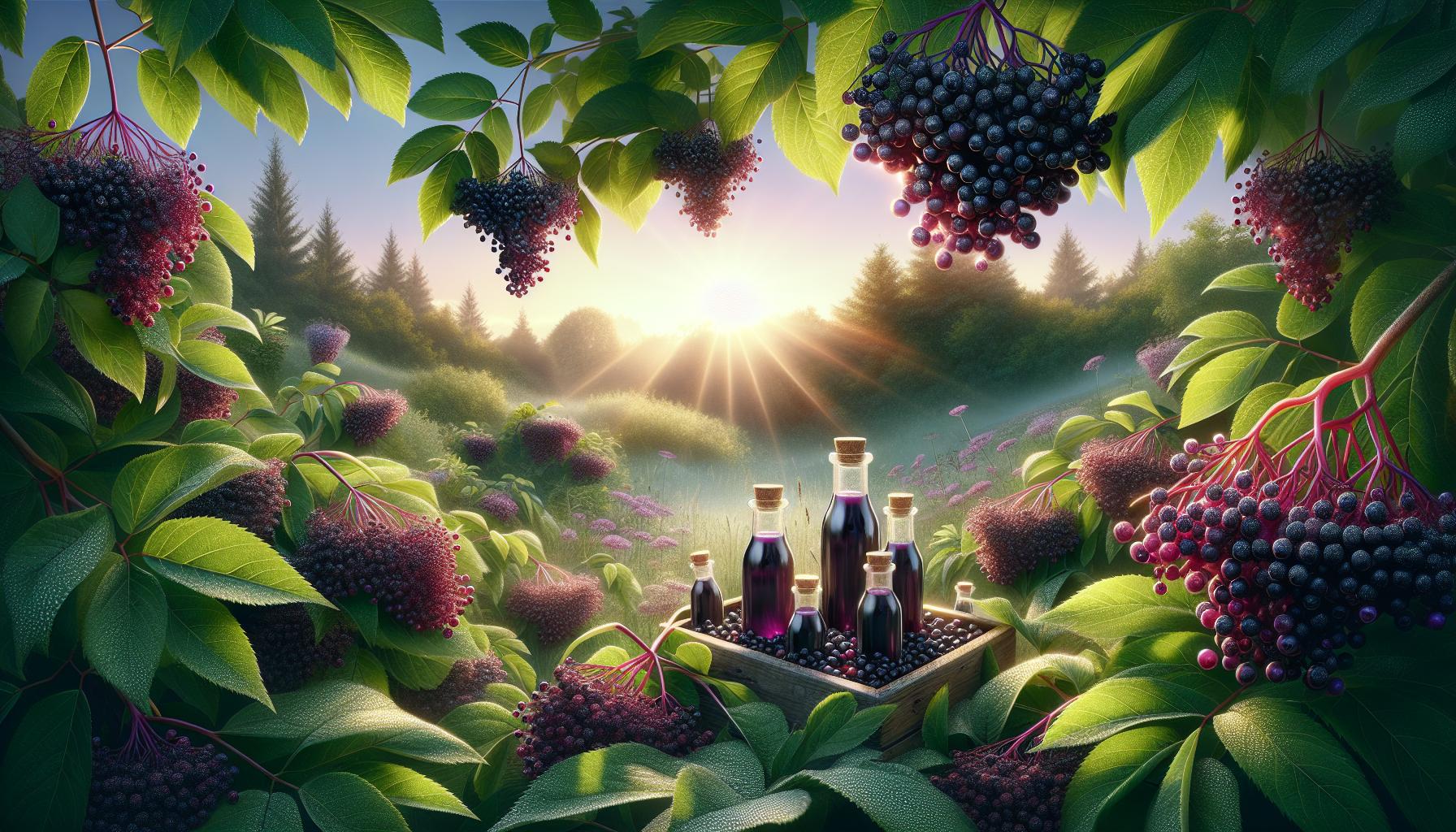
Can you eat raw elderberries?
When uncooked, elderberries contain a toxic substance that can cause nausea, vomiting and diarrhea, so any preparation of elderberries you use should be cooked. Commercial preparations of elderberry such as syrups and lozenges don’t contain this substance and are generally recognized as safe for that reason.
Into the World of Elderberries: Know Their Roots
“Where are elderberries grown?” is the question on many of our readers’ minds. In a nutshell, you’ll find elderberries growing widely across the globe. Its cultivation spans continents, thriving in North America, Europe and parts of Asia and Africa. However, to genuinely understand their growth patterns, we should delve deeper into the thriving environments, various types, and impactful factors that decide elderberries’ successful cultivation.
A Global Spread: Elderberries Across the Earth
Like explorers of old, elderberries have found footholds in far-flung corners of the globe. The plant’s adaptability is akin to a seasoned traveler, able to make itself at home in a range of environments.
Prolific Growers in North America and Europe
Think of North America and Europe as elderberries’ favorite vacation spots. They grow profusely here, coloring the landscape with their bloom. Notably, North American soil is rich with the native species Sambucus nigra subspecies canadensis, while Europe sees the growth of Sambucus nigra subspecies nigra, a subtle distinction, but one that speaks to the plant’s adaptability.
Blending with the Landscape: Asia and Africa
Like a chameleon, the elderberry bush effortlessly blends with the geography of Asia and Africa. While its presence isn’t as dominant as its western counterparts, the elderberry finds pockets of growth in these continents.
Quenching Thirst in the Middle East
In the sizzling landscapes of the Middle East, the elderberry plant is like a welcome oasis for those seeking its fruits. The plant has successfully weathered harsh conditions and blooms in areas where water is available, proving its resilience to even arid terrains.
Planting Grounds: Factors Influencing Growth
Elderberries, like any respectable jet-setter, have their preferences when it comes to accommodation. Whether it’s a well-lit spot amidst the fields or idyllic damp areas by the river bed, understanding the environmental factors that influence their growth helps solve our central query: where are elderberries grown?
Soil, Sunshine, and Seasons
Elderberries are tolerant plants; they don’t turn their nose up at average soils but do thrive in well-drained, loamy soil. Likewise, while they aren’t sun worshippers per se, they do need a fair share of sunlight to grow berries. The more sun they get, the sweeter their berries. Also, climate plays a significant role. Temperate climates where seasons change are preferred.
A Nice Stay at Home: Growing Your Own Elderberries
Contrary to the misconception among many novice gardeners, cultivating elderberries right in your backyard isn’t a Herculean task. These eye-pleasing plants can easily be a part of your home gardens, given some time, care, and the right conditions.
A DIY for Elderberry Enthusiasts
Growing elderberries at home can be as simple as procuring some cuttings of a well-grown elderberry plant, sticking them in a pot with quality soil, and patiently waiting while nature takes its course.
Answering the Elderberry Enigma
In conclusion, the answer to “where are elderberries grown?” is more global than you may think. Their adaptability, resilience and comparatively easy growth requirements allow these intrepid plants to span continents. From the wilds of North America to the sunny slopes of Europe, and even the arid corners of Africa and Asia, elderberries truly have a world view!
Frequently Asked Questions
1. Can I grow an elderberry bush from a berry?
Yes. Elderberry seeds, found within the berries, can sprout into new plants. However, it is generally easier and more reliable to grow from cuttings.
2. What time of year do elderberries bloom?
Elderberries bloom in early summer, offering their clusters of creamy white flowers to the warming sun.
3. How long does an elderberry plant live?
An elderberry bush can live for many years, often around 60 to 100 years, with proper care.
4. What are some uses of elderberries?
Elderberries are a multipurpose fruit. They’re widely used in wines, teas, jams, and medicinal syrups, recognized for their plentiful health benefits.
5. Are elderberries poisonous?
While elderberries themselves are safe to eat when fully ripe and properly cooked, parts of the plant, including stems, leaves, and unripe berries, can be toxic if ingested. Always ensure you’re consuming properly prepared elderberries.


